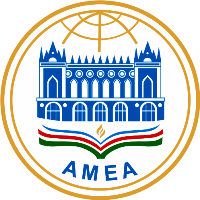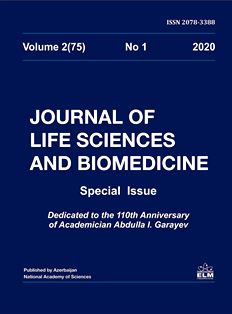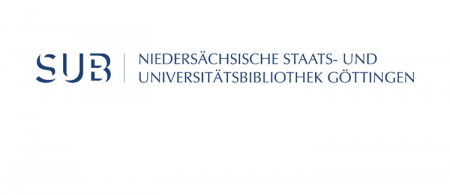
On the issue of occupational pathology in the eyes of workers of the modern petroleum industry of Azerbaijan
On the issue of occupational pathology in the eyes of workers of the modern petroleum industry of Azerbaijan
Elmar Kasimov, Sona Ibrahimova pdf 10.5281/zenodo.8004164
National Center of Ophthalmology named after Academician Zarifa Aliyeva, 32/15, Javadkhan Str., AZ1114, Baku, Azerbaijan
For correspondence: ibrahimova.sona@gmail.com
Received: March 10, 2023; Received in revised form: March 23, 2023; Accepted: March 30, 2023
Abstract:
The constant increase of the capacity of facilities used in the petroleum industry, their modernization as a whole necessitates a detailed study of the possible adverse effects of certain production factors on the organism of workers, including their ophthalmological status. The purpose of this research was to study the frequency of occurrence and the nature of possible changes in eye among workers of the modern petroleum industry. In total, 1852 employees from 13 enterprises of the State Oil Company of Azerbaijan Republic (SOCAR) were covered by a comprehensive ophthalmological examination in 2017-2019, taking into account age, work experience, severity of working conditions and exposure to harmful chemicals. A survey was conducted to identify the presence of complaints related to vision, chronic diseases, and contact during the work process with harmful chemicals. The degree of occupational causation of the identified diseases was determined based on the calculation of the absolute and relative risk, as well as the etiological fraction. It was found that 30% of workplaces belong to the high hazard class C (harmful working conditions), the most numerous were a group of people aged 50 to 59 years, the average age was 48±2.3 years; the average work experience of employees was 19.3±1.7 years. Of all respondents, 46.5% (861 people) had direct contact with harmful chemicals and petroleum in the process of work. The state of general ocular pathology was established in workers employed in the modern petroleum industry, 918 people (49.6% of all examined) had pathology in both eyes. In the structure of ophthalmopathology, the following nosologies were the most common: conjunctival and corneal diseases (AR=39%), various neoplasms of the eye and its adnexa (AR=26%) and refractive errors (AR=24%). The high level of etiological proportion and relative risk for conjunctival and corneal diseases (assuming 2<RR<3.2, EF=33-50%), as well as for various eye neoplasms (assuming 3.2<RR<5, EF=51-66%), make it possible to attribute these nosologies to work-related.
Keywords: Occupational eye pathology, absolute risk, relative risk, etiological fraction, petroleum production
REFERENCES
Alieva Z.A. (1980) Occupational eye pathology in tire production. Baku, 127 p. (in Russian).
Alieva Z.A. (1985) Occupational eye injury. All-Union Congress of Ophthalmologists. Мoscow, 4:11-13 (in Russian).
Alieva Z.А., Nesterov А.P., Skripnichenko Z.M. (1988) Occupational pathology of the organ of vision. Мoscow: Meditsina: p. 129-156 (in Russian).
Аskarova Z.F., Askarov R.А., Kildebekova P.H. (2012) The analysis of morbidity among workers of petrochemical industry. Bashkortostan Medical Journal; Vol 7, 6:5-10 (in Russian).
Akhundova M.I. (1998) On the issue of the effect of oil products on the organ of vision of the workers of the p/u "Azneft-yanajag". Materials of the conference dedicated to the 75-th anniversary of the birthday of Academician Zarifa Aliyeva: Actual problems of ophthalmology, 69-71 (in Russian).
Bagirov N.A. (2004) Some features of cataract surgery in patients working in the oil fields. Azerbaijan Medical Journal, 1: 62-64 (in Russian).
Blagun I.V., Varyvonchyk D.V., Vitovska O.P. (2018) The risk factors of dry eye syndrome at workers of coal mine. Ophthalmic HUB. Materials scientific and practical conferences. Ukraine: Kiev, p.14-16. Guidance on occupational health risk assessment for workers. (2004) Organizational
Kasimov and Ibrahimova and methodological foundations, principles and evaluation criteria. R 2.2.1766-03 Ministry of Health of Russia, Moscow (in Russian).
Izmerov N.F., Bukhtiyarov I.V. (2018) Topical issues of occupational diseases of the organ of vision. "Actual problems of ophthalmology" dedicated to the 95th anniversary of Academician Zarifa Aliyeva, Baku, April 28, 94-95 (in Russian).
Janabayev D.D., Ilbekova К.B., Kashkinbayev Y.Т. (2019) Prevalence of diseases in oil industry workers. Science and Healthcare, (Vol 21) 5: 88-102 (in Russian).
Kasimov E.M. (2017) Features of eye pathology in workers of petrochemical industry of Azerbaijan in the field “Oil rocks”. Azerbaijan Journal of Ophthalmology, 3(25): 76-80 (in Russian).
Obukhova M.P., Bakirov A.B., Valeeva E.T., Gimranova G.G. et al. (2016) Occupational eye diseases. Textbook, 66 p. (in Russian).
Pavlovich T.P., Cherevko A.N., Labzo S.S., Girko I.N. et al. (2021) Assessment of risks and chances in medical research: guidelines - Minsk: BSMU, 20 p. (in Russian).
Petri A. (2009) Visual medical statistics. Moscow: GEOTAR-Media, 168 p. (in Russian). Rustamov М.S. (2012) Results of studying the state of the organ of vision during prolonged contact with oil products. Ophthalmological journal: 6(449): 80-82 (in Russian).
Shulpina I.B., Alieva Z.A., Moshetova L.K. (1983) Topical issues of ophthalmology. Baku: "Azerneshr", 343 p. (in Russian).
Simon S.G., Ming C.S., Jane Z. (2012) Risk management capability building in SMEs: A social capital perspective; https://doi.org/10.1177/0266242611431094. WHO (2016) Global strategy on human resources for health: Workforce 2030. Geneva.























